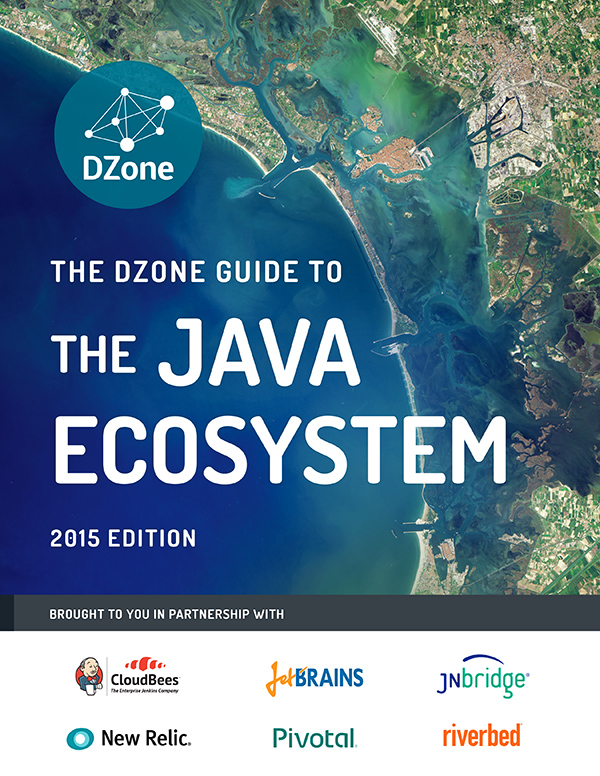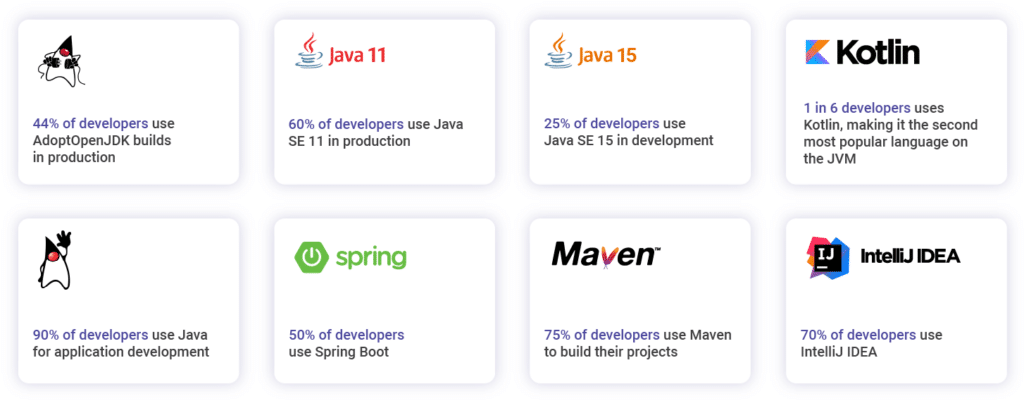The Java ecosystem is in a constant state of dynamic evolution, a testament to its resilience and the vibrant community that supports it. For developers building data-centric applications, Hibernate has long been the cornerstone of persistence, providing a robust bridge between the object-oriented world of Java and the relational world of databases. Staying current with the latest Hibernate news is not just about adopting new features; it’s about leveraging significant performance enhancements, modern programming paradigms, and powerful new capabilities that can redefine application architecture.
Recently, the Hibernate team has unveiled a series of exciting release candidates for its core projects: Hibernate ORM, Hibernate Reactive, and Hibernate Search. These upcoming releases are more than just incremental updates. They represent a significant leap forward, embracing the latest trends in the Java ecosystem news, from reactive programming to enhanced query capabilities. This article provides a comprehensive technical deep-dive into these upcoming changes. We’ll explore the new features with practical code examples, discuss implementation details, and outline best practices to help you prepare your Spring Boot and Jakarta EE applications for the next generation of Java persistence. Whether you’re tracking Java 21 news or optimizing for performance, these Hibernate updates are critical to your development roadmap.
The Evolving Core: What’s New in Hibernate ORM?
Hibernate ORM remains the heart of the Hibernate ecosystem. The latest release candidates (leading up to version 6.5) focus on refining the developer experience, enhancing performance, and expanding its powerful query language, HQL. These updates ensure that Hibernate not only keeps pace with modern database features but also aligns with the latest advancements in OpenJDK and the broader JVM news landscape.
Enhanced HQL and Native SQL Functionality
One of the most significant areas of improvement is the expansion of HQL to support more native SQL functions, reducing the need to drop down to native queries for common tasks. A key addition is the support for list aggregation functions, which are incredibly useful for reporting and data summarization.
For instance, functions like LISTAGG (for Oracle and DB2) and GROUP_CONCAT (for MySQL and H2) are now available directly in HQL. This allows developers to aggregate string values from multiple rows into a single string without complex workarounds.
Consider an e-commerce application where you want to retrieve each product category along with a comma-separated list of all product names within that category.
// Entity: ProductCategory
@Entity
public class ProductCategory {
@Id
@GeneratedValue
private Long id;
private String name;
// getters and setters
}
// Entity: Product
@Entity
public class Product {
@Id
@GeneratedValue
private Long id;
private String name;
@ManyToOne(fetch = FetchType.LAZY)
private ProductCategory category;
// getters and setters
}
// HQL Query using GROUP_CONCAT
String hql = """
SELECT
c.name,
GROUP_CONCAT(p.name ORDER BY p.name SEPARATOR ', ')
FROM
Product p
JOIN
p.category c
GROUP BY
c.name
""";
List<Object[]> results = session.createQuery(hql, Object[].class).getResultList();
for (Object[] result : results) {
String categoryName = (String) result[0];
String productNames = (String) result[1];
System.out.println("Category: " + categoryName + " | Products: " + productNames);
}This improvement simplifies queries that were previously cumbersome, making the code more readable and portable across databases that support similar aggregation functions. This kind of enhancement is crucial for developers following Java wisdom tips news, as it promotes cleaner, more maintainable data access layers.
Performance and Modern Java Alignment

Under the hood, Hibernate ORM continues to see performance optimizations, particularly in its bytecode enhancement and session management. The latest releases are built and tested against modern Java versions, including Java 17 and Java 21, ensuring developers can leverage the latest language features and JVM improvements. This alignment is critical, especially with ongoing developments like Project Loom news, as a highly optimized ORM is essential for getting the most out of virtual threads and structured concurrency.
Embracing the Future: Non-Blocking Persistence with Hibernate Reactive
The shift towards reactive programming is one of the most significant trends in the Reactive Java news space. Modern applications need to be highly responsive and scalable, capable of handling thousands of concurrent connections without blocking threads. Hibernate Reactive is the answer to this challenge, providing a true non-blocking persistence layer for Java applications.
How Hibernate Reactive Works
Unlike traditional Hibernate ORM, which relies on the blocking JDBC API, Hibernate Reactive is built on top of reactive database drivers (like the Vert.x SQL drivers). This means that every database operation—from opening a session to executing a query and committing a transaction—is an asynchronous, non-blocking operation. This approach frees up threads to handle other requests while waiting for I/O, dramatically improving application throughput and resource utilization.
Hibernate Reactive integrates seamlessly with reactive frameworks like Quarkus (via Panache) and Vert.x. It uses the Mutiny reactive programming library to represent asynchronous results, typically as a Uni<T> (for a single result) or a Multi<T> (for a stream of results).
Practical Example: A Reactive Repository
Let’s implement a simple reactive repository for our Product entity using Quarkus and Panache, which builds on top of Hibernate Reactive. The code looks deceptively simple, but it’s fully non-blocking under the hood.
import io.quarkus.hibernate.reactive.panache.PanacheRepository;
import io.smallrye.mutiny.Uni;
import jakarta.enterprise.context.ApplicationScoped;
import java.util.List;
@ApplicationScoped
public class ProductReactiveRepository implements PanacheRepository<Product> {
// Find products by category name in a non-blocking way
public Uni<List<Product>> findByCategoryName(String categoryName) {
return list("category.name", categoryName);
}
// Persist a new product asynchronously
public Uni<Product> saveProduct(Product product) {
return Panache.withTransaction(product::persist)
.replaceWith(product);
}
}
// In a JAX-RS resource (e.g., Quarkus)
@Path("/products")
public class ProductResource {
@Inject
ProductReactiveRepository repository;
@GET
@Path("/category/{name}")
public Uni<List<Product>> getProductsByCategory(@PathParam("name") String name) {
return repository.findByCategoryName(name);
}
}In this example, the findByCategoryName method returns a Uni<List<Product>>. The framework handles the subscription and execution, ensuring that the calling thread is never blocked. This is a game-changer for building microservices and event-driven systems that require high concurrency and low latency, a topic often discussed in Java concurrency news.
Unleashing Advanced Search: What’s New in Hibernate Search?
Modern applications often require more than simple CRUD operations and relational queries. The ability to perform fast, relevant, full-text searches across large datasets is a common requirement. Hibernate Search bridges the gap between your object model and powerful full-text search engines like Elasticsearch and Apache Lucene.

Declarative Indexing and Powerful Queries
Hibernate Search allows you to declaratively define how your entities should be indexed. By adding a few annotations, you can control which fields are indexed, how they are analyzed (e.g., tokenized, lowercased), and how associations are handled. When you persist, update, or delete an entity via Hibernate ORM, Hibernate Search automatically updates the corresponding search index in the background.
The latest release candidates for Hibernate Search (approaching version 7) continue to refine this integration, offering better performance, more flexible mapping options, and a more powerful and intuitive search DSL.
Practical Example: Full-Text Search on Products
Let’s extend our Product entity to make it searchable. We want to be able to search for products by their name and description.
import org.hibernate.search.mapper.pojo.mapping.definition.annotation.FullTextField;
import org.hibernate.search.mapper.pojo.mapping.definition.annotation.Indexed;
@Entity
@Indexed // Mark this entity for indexing by Hibernate Search
public class Product {
@Id
@GeneratedValue
private Long id;
@FullTextField(analyzer = "english") // Index this field for full-text search
private String name;
@FullTextField(analyzer = "english")
private String description;
@ManyToOne(fetch = FetchType.LAZY)
private ProductCategory category;
// getters and setters
}
// Performing a search query
public List<Product> searchProducts(String searchTerm) {
SearchSession searchSession = Search.session(entityManager);
SearchResult<Product> result = searchSession.search(Product.class)
.where(f -> f.match()
.fields("name", "description")
.matching(searchTerm)
.fuzzy(1)) // Allow for fuzzy matching (e.g., typos)
.fetch(20);
return result.hits();
}In this code, the @Indexed annotation tells Hibernate Search to manage an index for the Product entity. The @FullTextField annotation specifies that the name and description fields should be indexed for full-text search using the standard English analyzer. The search query itself uses a fluent, type-safe DSL to find products that match a given term across multiple fields, even allowing for fuzzy matching to handle misspellings. This powerful capability is essential for building user-friendly applications and is a key part of the evolving Java EE news and Jakarta EE news landscape, where rich functionality is paramount.
Best Practices and Future-Proofing Your Applications

Adopting these new features requires a thoughtful approach. Here are some best practices and considerations for integrating the latest Hibernate advancements into your projects, whether you’re following Spring Boot news or working in a pure Jakarta EE environment.
Tips and Considerations
- Plan Your Migration: When upgrading to a new major version of Hibernate ORM, carefully review the migration guide. Pay close attention to breaking changes, deprecated APIs, and changes in default behavior, such as fetching strategies or caching configurations.
- Embrace Reactive Where It Fits: Hibernate Reactive is incredibly powerful, but it’s not a silver bullet. It provides the most benefit in I/O-bound applications with high concurrency needs, such as API gateways, real-time data streaming services, or highly concurrent microservices. For CPU-bound tasks or traditional monolithic applications, the benefits may be less pronounced.
- Optimize Your Search Mappings: For Hibernate Search, invest time in designing your index mappings. Choosing the right analyzers, deciding which fields to index, and structuring nested/associated data correctly can have a massive impact on search performance and relevance.
- Leverage Modern Testing: As you adopt these new features, update your testing strategies. For reactive code, use libraries like
mutiny-test-utilsto test asynchronous streams. For search, write integration tests that verify the correctness of your indexing and querying logic. This aligns with the latest JUnit news and Mockito news, which emphasize robust testing for complex, modern architectures.
Staying informed about the broader Java security news is also crucial. Always use the latest patched versions of Hibernate and its dependencies to protect against vulnerabilities. The performance gains from these new releases also contribute to a more efficient, and therefore greener, application footprint.
Conclusion: The Path Forward for Java Persistence
The upcoming releases of Hibernate ORM, Hibernate Reactive, and Hibernate Search are a clear signal of Hibernate’s commitment to innovation and its central role in the modern Java landscape. The enhancements in Hibernate ORM provide a more powerful and developer-friendly core for all applications. Hibernate Reactive opens the door to building highly scalable, non-blocking systems that are ready for the future of cloud-native development. Finally, Hibernate Search continues to simplify the complex world of full-text search, making it accessible to all Java developers.
For developers, the key takeaway is clear: the world of Java persistence is not standing still. By exploring these release candidates, experimenting with the new features, and providing feedback to the community, you can not only improve your current applications but also prepare yourself for the next wave of architectural patterns. As you track developments from Oracle Java news to Adoptium news, remember that the libraries and frameworks you use are evolving just as quickly, and Hibernate is leading the charge in the data persistence domain.

